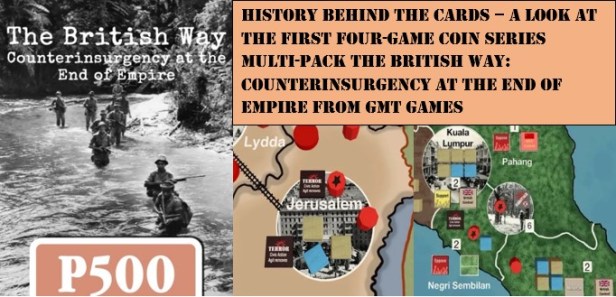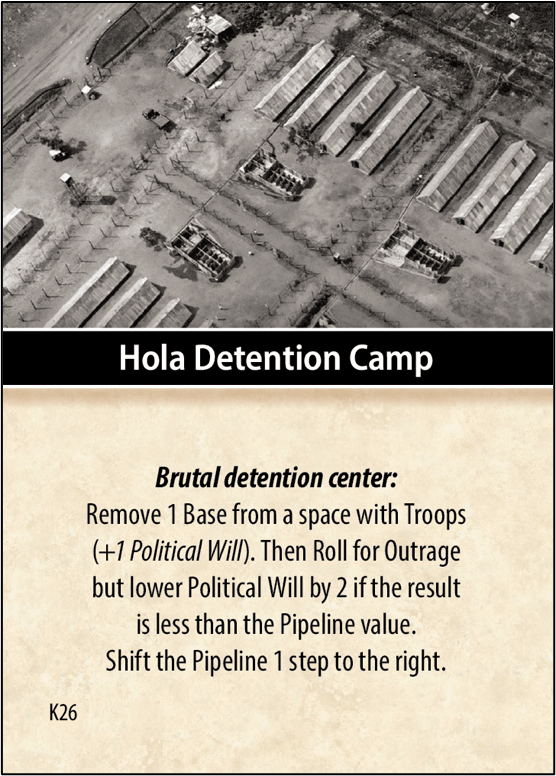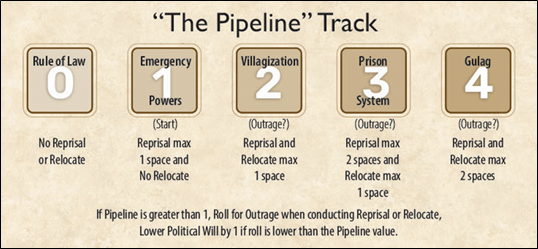As you know, I love the COIN Series and anything associated with it. Stephen Rangazas has been active over the past few years behind the scenes with the COIN Series with his development work on Fall of Saigon: A Fire in the Lake Expansion. He has used his background and research capabilities to great effect as he did the background work on the Event cards in the game. From that experience, he has now come forward with his own design in The British Way: Counterinsurgency at the End of Empire from GMT Games which was announced last year.
The COIN Series Multi-Pack format is new and The British Way is the first game in this new shootoff from the main series with the games containing two to four separate games exploring a series of thematically related insurgencies. If you want to better understand this new addition to the COIN Series, you can read the excellent InsideGMT Blog post by Stephen Rangazas with an introduction to The British Way as well as a look at what you can expect in the Multi-Pack format at the following link: https://insidegmt.com/the-british-way-introduction-to-the-multi-pack/

We have agreed to provide a home for this series of quick articles on the History Behind the Cards involved in the game as the design continues to move through development and playtesting. Thanks go out to the game’s developer Joe Dewhurst and designer Stephen Rangazas for their work on these articles which are very informative and should give you a better understanding of how The British Way deals with each of these counterinsurgencies.
One other note, I think that the new layout and design of the cards looks really great and this work is being performed by Matthew Wallhead. Keep in mind though that nothing is finalized and these layouts are still just “near final”.
*Note: The cards highlighted and their event text, as well as any pictures used showing any of the various components, are still just the prototype versions which is only intended for playtesting purposes and the design and event effects and text might still change prior to final development and publication.
History Behind the Cards – The British Way: Kenya

The British counterinsurgency campaign in Kenya used an escalating level of repression against the Kikuyu population supporting the Mau Mau insurgency. One of the earliest uses of repression in response to Mau Mau attacks against white settlers was the mass eviction of Kikuyu from areas designated as ‘white highlands.’ An estimated 70,000 to 100,000 Kikuyu left the white highland areas, with most forced out through mass evictions. Although the removal of Kikuyu from the white highlands made it harder for the Mau Mau to operate there, the displacement of large numbers of young men led many to join the Mau Mau forces in the mountain jungles.
Within the Kikuyu Reserve, the rural areas where the colonial government had forced most Kikuyu to reside, the British attempted to sever Mau Mau’s ties to the population with the use of forced relocation. Like the resettlement strategy used in the Malaya Emergency, though with less benefits provision and more violence, British troops forcibly relocated Kikuyu, Embu, and Meru communities into ‘protected villages’, to control the population and deny the Mau Mau in the mountain jungles their support. Over a period of only fifteen months, over one million people were resettled. Conditions in the villages were often poor, particularly for communities suspected of being sympathetic to the Mau Mau. Kikuyu Home Guard units were formed to police the villages, but they often abused those they were instructed to protect. Some accounts argue that the forced resettlement of the population was the ‘master stroke’ in defeating the Mau Mau.

In addition to the general population being confined to protected villages on a massive scale, Mau Mau fighters and sympathizers caught by British forces were detained in a series of prison camps known as ‘the pipeline’, since the more hardcore members would be sent to harsher prisons while less committed members would be eventually released back to the protected villages. Many of the British detention camps had harsh conditions, with prisoners facing beatings and torture. This was even more true of the camps used to imprison the perceived ‘hardcore’ members of the movement. In 1959, Hola Detention Camp received significant attention back in Britain from the news that eleven detainees were beaten to death by camp guards. After multiple investigations there were widespread condemnations of the violent methods being used in Kenya, not only by the usually critically Labour Party MP’s, but also by defenders of the British empire such as the controversial MP Enoch Powell.

The British Way: Kenya reflects the increased British use of repression against the Kikuyu population through the Pipeline Track. The British player may push the track higher, increasing their ability to deny the Mau Mau player access to support from the general population, through Reprisals removing Opposition and Relocation lowering the Population value of Reserve spaces. However, the increasing level of repression in Kenya also increases the chances that British atrocities will be detected by journalists or investigations. As the Pipeline Track value increases, there is a higher likelihood that the British player will fail Outrage rolls, causing Political Will to lower due to disgust with the brutal practices back in Britain.
The British counterinsurgency campaign in Kenya is a difficult topic, but important to depict in the multipack to illustrate the highly coercive side of Britain’s counterinsurgency legacy. I highly encourage anyone interested in the topic to seek out David Anderson’s Histories of the Hanged or Caroline Elkin’s Imperial Reckoning. Both are excellent books and easy to acquire for an affordable price, with the latter entirely devoted to the topic of the ‘pipeline’ system and British repression in Kenya.

In the next article in the series, we will learn about some of the cards and events in The British Way: Cyprus.
If you missed the previous entries in the series, you can catch up on the posts to date by following the below links:

If you haven’t paid attention over the past few years, Stephen knows his stuff and does a bang up job of explaining how the history of the highlighted conflicts has been incorporated into the design of The British Way. I feel like after reading these cards I can better understand and see the connection and motivations behind the events of the various conflicts.
If you are interested in The British Way: Counterinsurgency at the End of Empire, you can pre-order a copy for the special P500 price of $55.00 from the GMT Games website at the following link: https://www.gmtgames.com/p-945-the-british-way-counterinsurgency-at-the-end-of-empire.aspx
We also published an interview with designer Stephen Rangazas and if you are interested you can read that at the following link: https://theplayersaid.com/2022/03/07/interview-with-stephen-rangazas-designer-of-the-british-way-counterinsurgency-at-the-end-of-empire-from-gmt-games/
-Grant

Thank you for this. My interest in COIN games is pretty specifically 20th century set games so I am looking forward to this set. Do you have a sense as to whether these will play in a shorter time than the usual games?
LikeLiked by 1 person
Small board footprint with quick-but-deep gameplay leads to each of the games in the multi-pack playing in under 90 minutes.
LikeLike